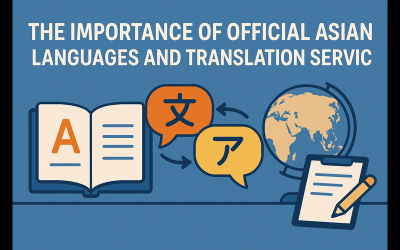Translation is a valuable tool and complex in its relationship both with technology as well as how it is used across various industries and verticles. Today, we are breaking down translation and how it relates to the law. To begin with – we need to break down different translation types to its most simple definition. Then you will begin to understand which type of translation is used in different cases. Don’t worry, you will very soon be an expert and know how to consult and advise anyone with these types of questions.
Sworn translation:
A sworn translation can also be referred to as a legal, official, public, or certified translation. So don’t be confused by these interchangeable terms. What it is, is a document that is signed by a sworn translator who is authorized by the foreign office to translate these types of official documents. What this provides, is that all documents under a sworn translation hold formal status with the authorities.
Within this, a sworn translation can be referred to as a certified translation. Key to remember: There is, in fact, a difference between a certified translator and a certified translation. A certified translation indicates that it is accurate and correctly translated from the original document and that the document holds formal status. As you can imagine, certified translation services can include legal documents including marriage, birth certificate translation, business contracts, etc. however, a certified translation does NOT need to be done by a certified translator. A certified translator is when a professional translator has passed an exam from the American Translators Association or other various organizations and is officially a certified translator.
Judicial translation:
A judicial translation is any translation relating directly to a document that is part of a judicial proceeding. So for example sentences, property deeds, lawsuits etc. However, this also includes documents such as marriage certificate translation for a couple filing for divorce lets say. So you begin to see an overlap here with a sworn translation. This is why it is crucial to see the distinct differences and know which services are appropriate at which time.
Legal Translation:
A legal document translation is translating texts that are somehow related to law from one language to another. So legal translation services include translating legislative text, lawful agreement, law manual, article on legal themes, anything related to law and educational textbooks. However, again here – you see “agreement” which may also mean it is included in a judicial transaction and therefore would require a judicial translation. This is why again, it is so important to know these subtle differences.
Where Protranslate Comes in:
Have more questions about legal document translation services vs. certified document translation services? If this blog wasn’t clear enough luckily for you Protranslate is available for all of your questions. This topic can be quite overwhelming and we want to make sure you got it right. Furthermore, should you need legal translation? Or what you were looking for wasn’t specifically mentioned? No problem. Protranslate offers legal translation online in addition to a variety of other services including notarized translation if you are looking for notarized translation services, to apostille translation should those be your needs even to subpoena translation. Don’t hesitate to ask, Protranslate is here for you.
Certified Translation Services
Get your documents translated and certified by a professional translator in 120+ languages with 24 hour delivery.
Get a Quote Rana Maalouf
Rana Maalouf

